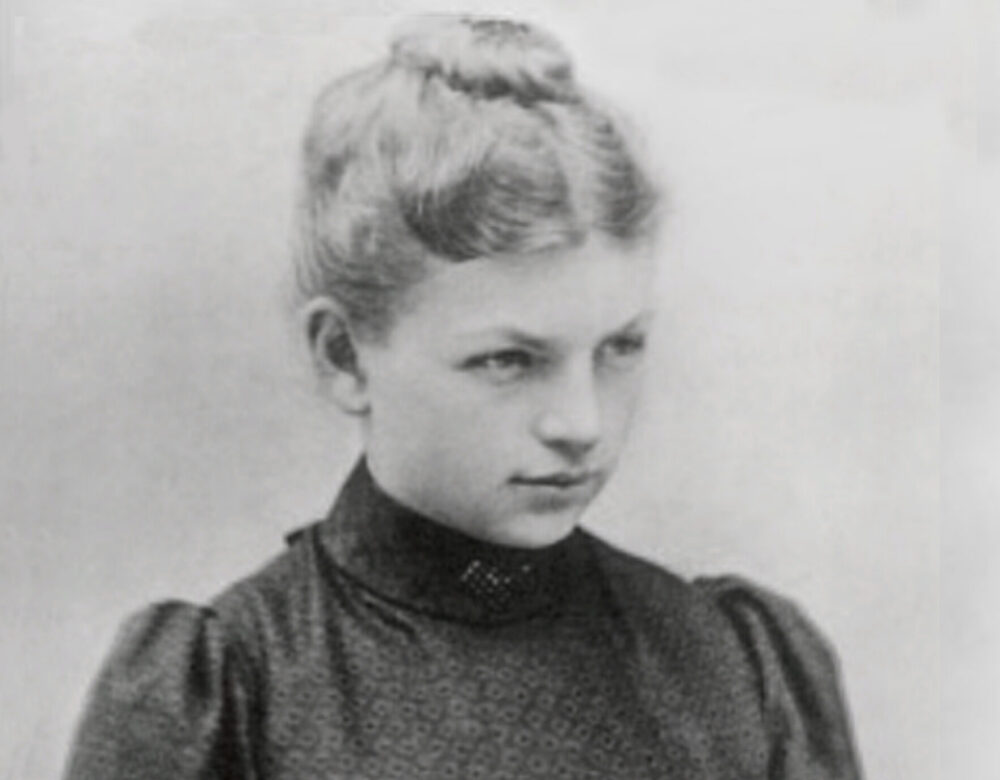On May 1, 1915, Clara Immerwahr Haber sat down at her desk to write farewell letters to friends and family. Later that night she committed suicide. The letters did not survive, nor is it known why she killed herself. Secondhand accounts tell of how she took her husband’s army revolver, walked into the garden, and fired a test shot. She then turned the gun on herself and pulled the trigger a second time. A week before her death her husband had organized the first chlorine-gas attack of World War I at Ypres, Belgium, in an attempt to break the military stalemate in Germany’s favor.
Immerwahr was born on June 21, 1870, near Breslau, Germany (now Wrocław, Poland). Her family lived on a country estate where her father was a successful, wealthy farmer. His first interest, though, was chemistry, and he exposed his daughter to its possibilities. Immerwahr went on to train at the University of Breslau. While there she met chemistry student Fritz Haber. The two would not meet again for many years.
Immerwahr decided against the more traditional female career path of teaching and made a new home for herself in the chemistry laboratory. After passing the exam that qualified her for graduate study, she worked in the physical chemistry program under Richard Abegg, a friend of Haber’s. Immerwahr enjoyed her research but found the life of a female student difficult; she wrote frequent letters to Abegg describing the unfairness of her male-dominated environment. In 1900 she successfully defended her dissertation, becoming the first woman in Germany to receive a doctorate in chemistry.
After graduation Immerwahr stayed on with Abegg as an unofficial assistant professor and lectured on chemistry at local women’s organizations. She received a letter from Haber the following year inviting her to a chemistry conference. While at the conference Haber proposed; they married a few months later. Immerwahr then moved to Karlsruhe, where Haber taught at the Karlsruhe Institute.
In her new city Immerwahr continued her chemical life: she attended meetings at the Chemical Society and gave lectures at the institute. But she also spent an increasing amount of her time in the house. She later wrote to her old adviser Abegg about the overwhelming number of household tasks expected of her and the ending of her scientific career. In June 1902 those responsibilities increased with the birth of a son.
Little is known about Immerwahr in the following years except that she spent an unhappy life running her household. In 1909 she sent another letter to Abegg, this time describing an oppression that for much of the time consumed her. She had stopped attending chemistry events in the city. Two years later she moved with Haber to Berlin, where he helped establish the Kaiser Wilhelm Institute for Physical Chemistry and Electrochemistry. With the onset of World War I, Haber became more involved with the Ministry of War in Berlin. He headed a chemistry section working on the production of nitrogen for explosives and fertilizer, and began working on poison gas as a weapon of war. On May 1, 1915, Haber was home, preparing for his trip to the Eastern Front, where he would finalize plans for the next use of chlorine gas in battle.
Why Immerwahr chose that night has long been debated. Some speculate that she could no longer tolerate Haber’s plans to use chlorine gas as a weapon. Others wonder if the responsibilities left to her by Haber became too much. It could also be that the gender expectations of her time crushed Immerwahr and her scientific ambition, offering too little to a woman who wanted much.




